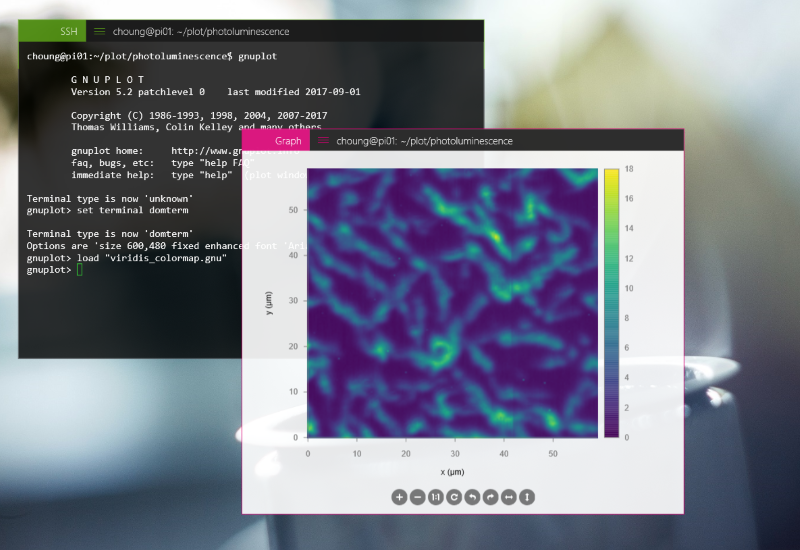

Never type a really long command more than.

#GNUPLOT USING COMMAND HOW TO#
Add the location of the folder where gnuplot.exe exists, and you will be able to use gnuplot from cmd. The following pages summarize how to use gnuplot immedi- ately to graph experimental data with errors and. If you want gnuplot to be in Path regardless of the user account you are using, look for the system variable Path and you will see a semicolon-separated list of file system locations.

User variables are environment variables which applies only to the current user, while system variables apply to the whole system. You will see that there are two types of environment variables, user variables and system variables. As we know, gnuplot use commands to plot all kinds of image, we port almost all the useful commands as functions in py-gnuplot. If you are using Windows 10, you can right-click the start menu, click on System > Advanced System Settings > Environment Variables. The command above will produce a scatterplot. gnuplot> plot 0:0.5 avg-near.bigg using 1:2. GNUPLOT - version 4.0 Gnuplot is a free, command-driven, interactive, function and data plotting program. If instead you want to pass a command string to a shell for immediate execution, use the system function or the shortcut. The shell command ignores anything else on the gnuplot command line. To return to gnuplot, type exit or the END-OF-FILE character if using Unix, or exit if using MS-DOS or OS/2. It can also use column(x) and valid(x) where x is an arbitrary. The shell command spawns an interactive shell.
#GNUPLOT USING COMMAND FULL#
So unless you specify the full path to gnuplot.exe, you can't run it if it's not in Path. I think only one line at the top is accepted as a column header. The expression can use 1 to access the first item read, 2 for the second item, and so on. You can only execute commands which exist in one of the folders specified by the Path environment variable.


 0 kommentar(er)
0 kommentar(er)
